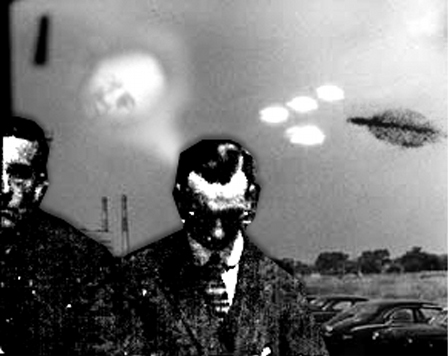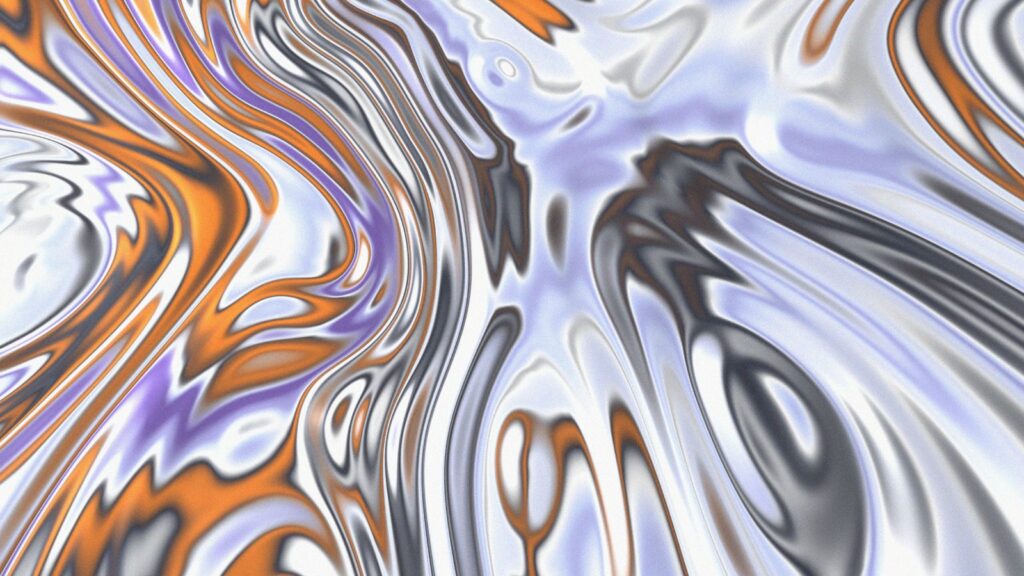"In theory, science should welcome anomalies as the harbingers of new
discoveries. The scientific intelligence should derive joy from being surprised
by new and hitherto unexplained phenomena. After all, isn't that what science
is all about?" –Joseph M. Felser: Outsiders, Anomalies, and the Future of "Forbidden Science."
John Keel, one of the most well known investigators into the outer realms of
fortean experience, was quite vocal on how often these experiences are attended
by fraud or foul play, and yet, to his dying day, he was a believer. He knew
that the narrative structure of anomalous activity is often more important than
the scientific veracity of its evidence. In exploring the story of unexplained
events, the interplay of coincidence and phenomenon can develop far beyond what
any rational theory holds on to.
The narrative nature of unexplained phenomenon is not easily dealt with in a
society seeking efficiency at all cost. Our corporations and economic entities
like their schedules set and secure, our legal and judicial branches enjoy
clarity (even if that clarity is linguistically profuse and nearly
incomprehensible), and most of our scientists like things logically sound and
reducible to results that are easily monetized to fund their future research.
This is where the scientific study of anomalous phenomenon breaks down, it's
difficult to secure funding to study something so slippery, especially when the
results that do surface are not easily monetized. The new discipline of paranthropology has emerged as a way to look at these phenomena through their cultural and
personal evidence, rather than seeking to secure a hard theory for their
materialization. It is a specified version of what the anthropologist Charles
Laughlin describes as 'transpersonal anthropology', explicitly looking at events and experiences that fall under the purview of
what is commonly called paranormal.
I discovered it recently when Jack Hunter, who runs the Journal of
Anthropological Approaches to the Paranormal, mentioned his graduate work on
the Society for the Academic Study of Magic listserv. He
did a study of Spiritualism where, rather than just look at the movement's
history, or conduct a sociological survey, he actually went in and trained with
Spiritualist groups in order to enter a mediumistic trance state.
Using the methods of ethnography to explore anomalous phenomenon is not part
of the regular procedures of parapsychology. Since the late 60's and early 70's
parapsychology has sought objective verification for the phenomenon in the
laboratory rather than cultivating the experience as a participant in the field.
The change in methodology presented by paranthropology mirrors approaches that
have been successfully used by researchers in exploring indigenous societies,
especially in the areas of ritual and magic.
Anthropology has long been the home of fringe experience. Researchers
encountering other cultures are met with belief systems and experiences that
run counter to their own expectations. Ethnography and immersion have proven
the most successful means for overcoming this by allowing researchers to fully
explore a culture from within its own understanding. The power of this method
can be seen in the resurgence of interest in the use of psychedelics for
therapeutic means. What western science failed to embrace in the laboratory
fifty years ago has been forced into recognition by anthropologists and
researchers who have consistently shown that psychedelics play a major role in
the cohesion of many indigenous societies.
Studying the contemporary history of psychedelics shows the dangers of
trying to monetize something that is, by nature, destabilizing. Psychedelics
tear apart a person's set patterns; when national intelligence agencies poured
funding into psychedelic research in hopes of finding the key to mind control
they found instead that psychedelics break down control factors. As an
initiatory element this destabilization is useful to ritual contexts where new
elements are introduced to replace what has been unmoored, but without this
ritual setting the results are not as predictable and can be terrifying or even
damaging.
Anomalous phenomenon has a similar characteristic. As Jacques Vallee, and
other scientists taking a reasoned approach to studying the unexplained, have
shown, experiences with the unknown are often traumatizing and life changing.
To move from the daylight world of objective experience into the twilight world
of the unexplained can be deeply disturbing. It leaves one without an objective
measure for reality, puts one outside the boundaries of what is easily
explainable, and can make one an object of ridicule and rejection.
"As I opened the door, Alex (Tanous) smiled and extended his hand.
Suddenly I froze, remembering that this psychic was known for something
else — an uncanny ability to foretell death. He once told me he got his most
accurate death impressions when he shook somebody's hand. Hey! I thought,
I don't want to shake this guy's hand. Instead I threw my arms around
him, and we embraced. And as we embraced, I thought to myself in rapid
succession — "I don't want to believe Alex can do any of
these things!" And then, "I don't believe he can!" —Nine
Reasons to Fear the Paranormal, Michael Grosso.
The original methodology of the Society for Psychical Research used the
tools of anthropology and philosophy more often than it did those of psychology,
or the hard sciences, in its investigations. When reading over the journals
from the late 19th century they are comprised mostly of recounted
tales, second hand information, metaphysical speculation, and book reviews.
What hard science there is amounts to photographic evidence, and specialists in
the art of illusion and sleight of hand debunking or affirming the legitimacy
of mediums. The story always remained at the forefront of their investigation,
because the story was the motivating factor to the phenomenon.
George Hansen, who worked with the
Rhine Research Lab and Princeton's Engineering Anomaly Research center, has
written extensively on the consistent struggle in the parapsychology world to
maintain credibility in the face of phenomenal experience. One of the
unanticipated side effects of the research has been that when results are achieved,
or seem close to being achieved, things start to happen that destabilize the
research. Divorces, job loss, suicides, lack of funding, or blatant frauds end
up ruining years of inquiry. It's one thing to study traditional or religious
groups that have some element of the paranormal in their practice; it's a
totally different thing to study it within the context of every day life where
there are no bounds to the experience, and no set structure for how it should
be interpreted.
One element of this is the fringe nature of the phenomenon. Many of the people
drawn to studying it, or who are themselves being studied, are already on the
fringes of society. Having stepped outside of the norm they are ripe for
destabilizing events, and not always ready for their consequence. Another
element seems to be that those who go in to study it with solid beliefs already
in place are either shaken to the point that they become 'true believers',
dropping all scientific credibility and distancing themselves from what is considered
legitimate research, or they become rigid debunkers to protect their own sanity
and credibility. In many cases nothing happens at all, or the results are not
repeatable, making it impossible to gather a baseline of data for reasonable
comparison.
The area of fraud also provides a difficult hurdle in anomaly research. Even
in cases where laboratory tests seem to indicate positive effects, at one point
or another some bit of trickery or lax research controls seem to emerge in
place of legitimate ability. In traditional cultures the use of sleight of hand
and showmanship is well known as part of the shamanic repertoire. To the
Western mind this appears as fraudulent; however traditional healers will
explain the necessity of such tricks and techniques to distract and engage the
spirits. Even when sleight of hand is apparent in anomalous phenomenon, the
interplay of events often shows that there is something more going on, but to
justify this in the laboratory, under strict scientific methodology, is impossible.
The concept of paranthropology is an attempt to approach these events from
another angle where there are different measurements for credibility. This is
closer to the phenomenological approach recommended by Joseph M. Felser,
associate professor of philosophy at Kingsborough Community College/CUNY, in
his essay Philosophical Sensitives and
Sensitive Philosophers: Gazing into the Future of Parapsychology. Felser recognizes the inherent
difficulties of fitting anomalous phenomena into any set theoretical structure.
Rather than trying to explain them through predetermined theories, or fit them
into dogmatic belief structures, he sees a value in exploring the phenomena
experientially.
This is also the approach that Jeffrey Kripal, J. Newton Rayzor Professor of
Religious Studies and Chair of the Department of Religious Studies at Rice
University, takes in his recent work Authors
of the Impossible. As he says on the website for the documentary based on the book:
"The paranormal, it turns out, is as
much about meaning as matter. And we — not as surface egos, but as some still
mysterious force of consciousness — are its final authors. If the paranormal,
though, is as much about meaning as matter, as much about the subject as the
object, then science can never truly grasp it, for science must turn everything
into an object and cannot treat questions of meaning. We thus need a new way of
knowing, a way that can embrace both the sciences and a new art of reading
ourselves writing ourselves."
Whether or not they are provable in a laboratory setting, anomalous experiences
remain a part of life for a surprising number of people. Gallup polls show that
17% of the population in the United States claim to have had a UFO experience.
The Baylor Religion Survey, as detailed in NYU Press' recent publication Paranormal America, shows that, in the
United States, 45% of women and 32% of men believe in the existence of ghosts,
and 31% of women and 28% of men believe in telekinesis. Taking into account the
various categories of paranormal possibilities close to half of the population
believes in, or claims to have experienced, something out of the ordinary in
their lives.
These statistics show that the paranormal is a significant motivating factor
in how our culture develops and understands itself. The hope fostered in the
formation of the SPR was that by investigating these experiences we would be
lead to a deeper understanding of ourselves and our place in the world. Ultimately
the secrets of anomalous experiences, whether they are purely psychosomatic or
actually based in fact, go right to the heart of the secrets of human
experience itself. To quote the 17th century philosopher Thomas
Vaughan, with "this considered, it cannot
be thought unreasonable and certainly not unseasonable, if a Society conscious
of the Truth, and skilled in the abstruse principles of Nature, shall endeavor
to rectify the world: for hitherto we have been abused with Greek Fables and a
pretended knowledge of Causes, but without their much desired Effects."
Although the root causes of such phenomenon may remain sub rosa, and
unattainable by the prying eyes of science, those that would approach them in
humility, without prejudice, and with a narrative eye for meaning, will find
much to explore.











